Juniper ordinary "Horstmann": description, planting and care
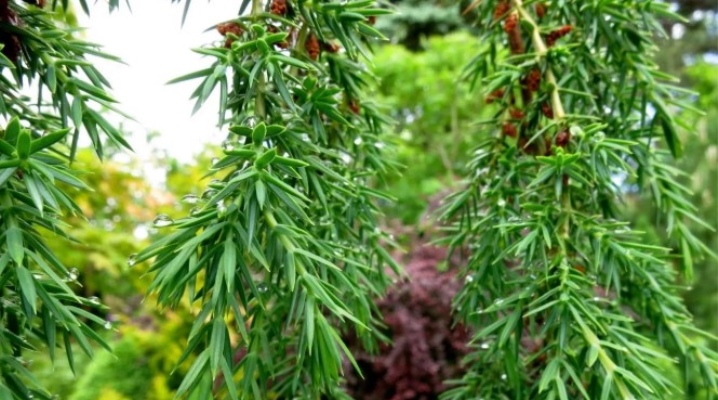
Many people plant various ornamental plants in their gardens. Coniferous plantings are considered a popular option. Today we will talk about the Horstmann juniper variety, its features and planting rules.
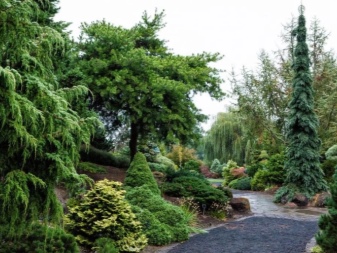
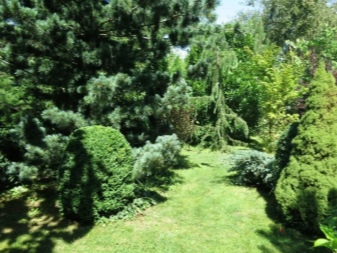
Description of the variety
This evergreen coniferous shrub reaches a height of 2 meters. The width of its crown can be no more than 1.5 meters. This juniper variety is distinguished by a drooping crown, which is created by vertical branches of the skeletal type. Their ends are directed downward.

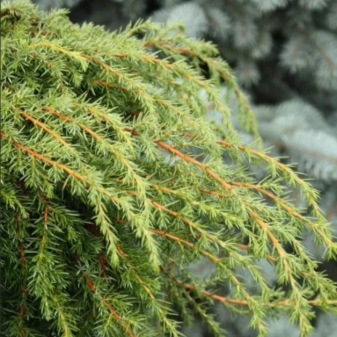
The coniferous needles of the plant are rather short, painted in a dark green color. The needles have a lifespan of about three years. After that, they are gradually replaced by new ones. The branches of such a juniper are red-brown in color.
Over the course of a year, their length can increase by 10 centimeters. The root system of the plant is fibrous.
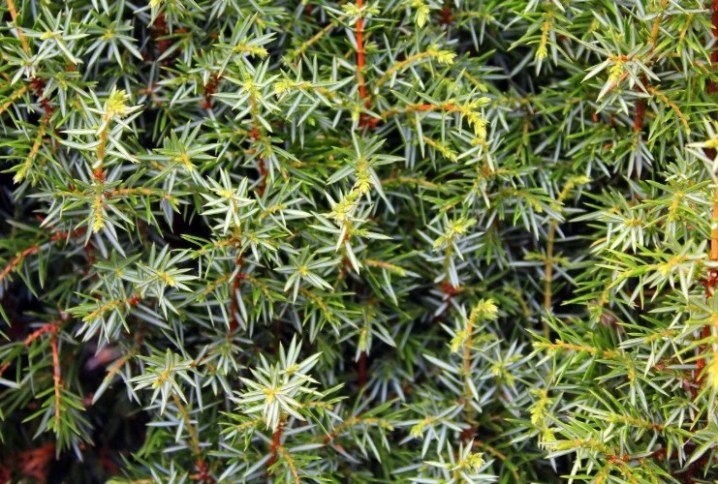
The "Horstmann" variety blooms with yellow flowers. A large number of small cones are formed on the juniper annually. Young berries are light green in color. As they mature, they become beige with a slight blue tint.
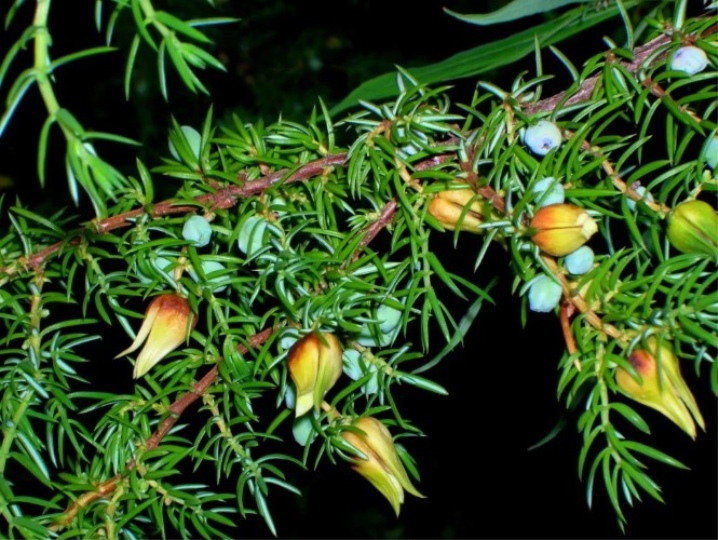
Landing
Seedlings of such a juniper should be purchased only in nurseries. Plants with a closed root system should be chosen, because such specimens of seedlings will not dry out when planted in open ground.
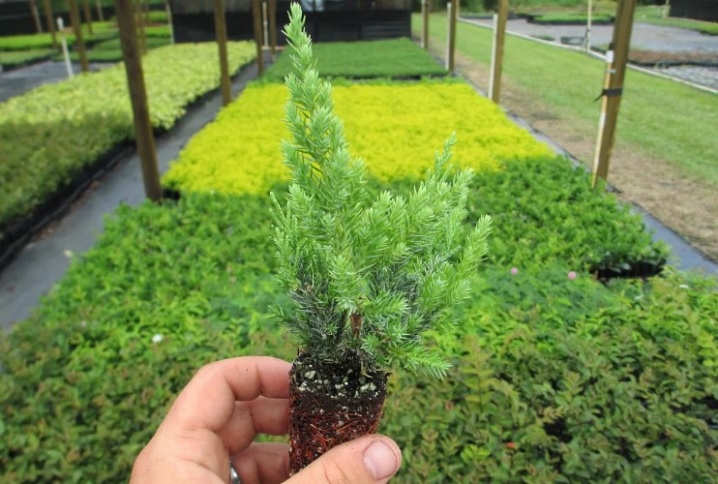
When purchasing seedlings with a closed root system, make sure that the plants are in special growing containers. Thin shrub shoots should protrude slightly from the drainage layer. A clod of earth with a root system should not rotate inside the container.
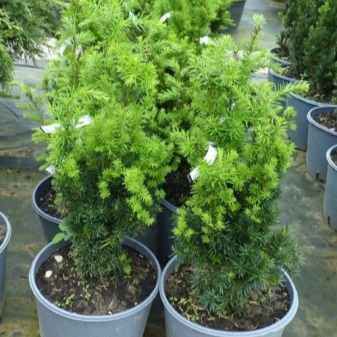
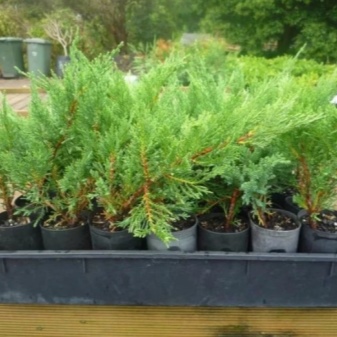
At the same time, the preparation of the land plot for planting seedlings should be carried out. Please note that Horstmann likes to grow in sunny areas... But it can feel great in slightly dark areas too. In too thick shade, the planting will often suffer from fungal diseases and look lethargic.
The landing area must be well protected from the winds.
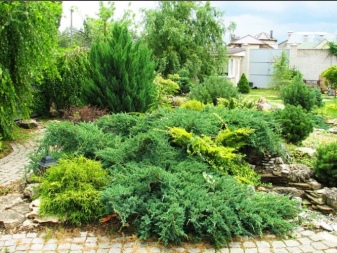

The soil should be slightly acidic or with a neutral acidity level. Planting can be done on loamy soils with a small addition of clean sand. The best option would be light soils with good breathability. At the same time, an excessive amount of moisture and a high level of salinity can lead to the rapid death of the plant.
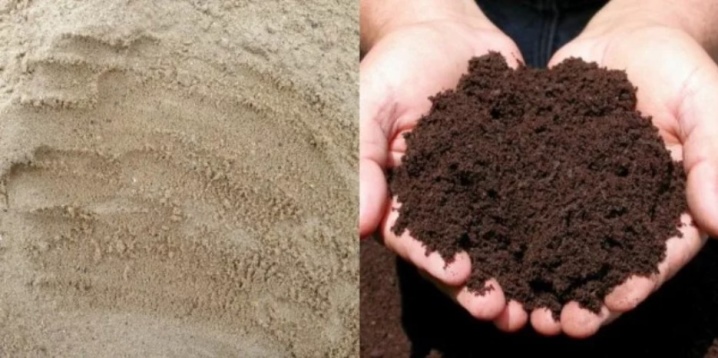
In the ground, you first need to make planting holes for young seedlings. They should be done at intervals of 1-1.5 meters. Leave a distance of 2 meters between the rows.
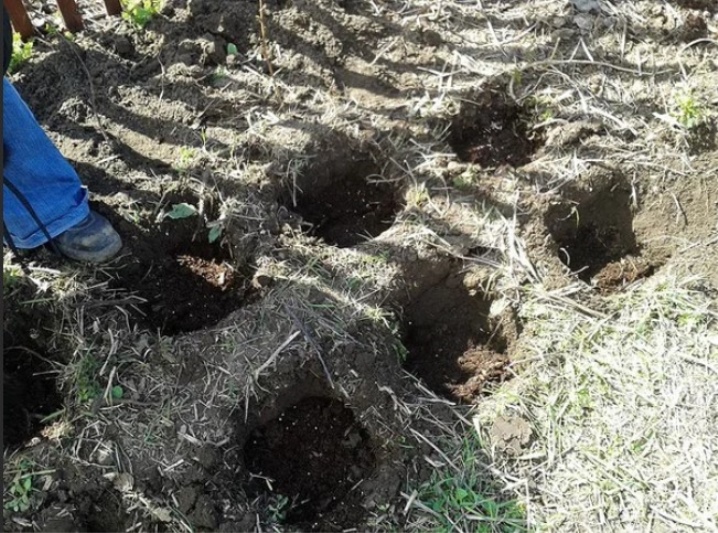
The depth of the holes depends on the length of the plant's root system. It should be 2 or 3 times larger so that the seedlings can fit and take root in a permanent place. Each seedling should be deepened in such a way that the root collar remains 4-5 centimeters above the soil surface.
Otherwise, the near-stem zone can begin to rot quickly, which will lead to the death of the plant.
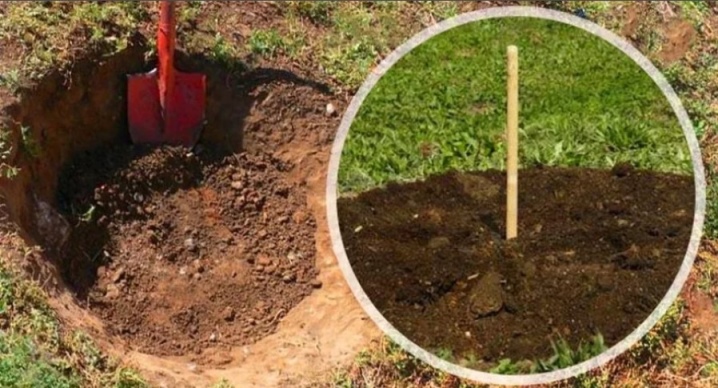
Drainage is laid at the bottom of each pit. For this, you can use broken brick, crushed stone or pebbles. After that, a mass of sod land, coniferous sawdust and sand is poured into the holes.
After such preparation, seedlings with an earthen clod are carefully lowered into the pits. The voids are filled with a special fertile composition.Everything is well tamped and watered thoroughly (about 10 liters of water per plant).
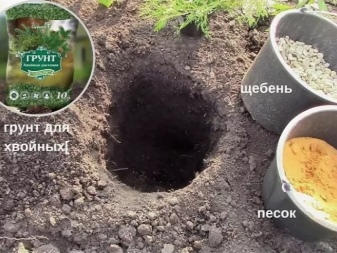
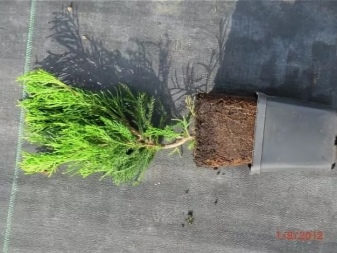
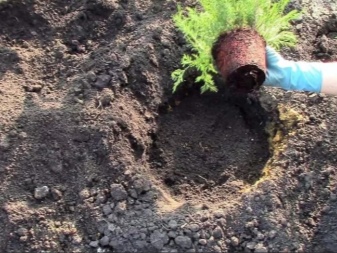
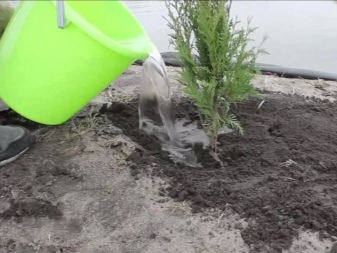
Care
Juniper "Horstmann" can grow and develop normally only with proper care. For this you should strictly observe the watering regime, make all the necessary fertilizing, prepare the plant for the winter period, carry out pruning and mulching.
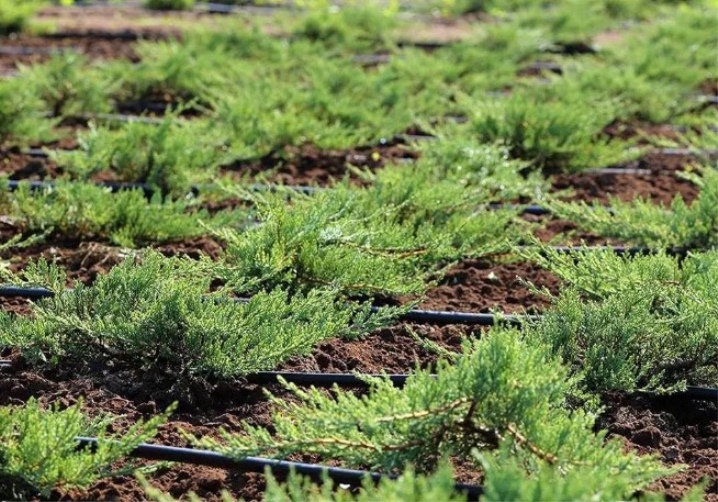
Watering
Within a month after planting a coniferous shrub, it should be watered as intensively and often as possible. Watering is especially important during a too hot summer.
For adults of this variety, one watering per week will be enough. This procedure will contribute to the growth of green mass and the root system of the shrub. Watering is especially important in the fall. At this time, about 20 liters of water is spent on one plant.
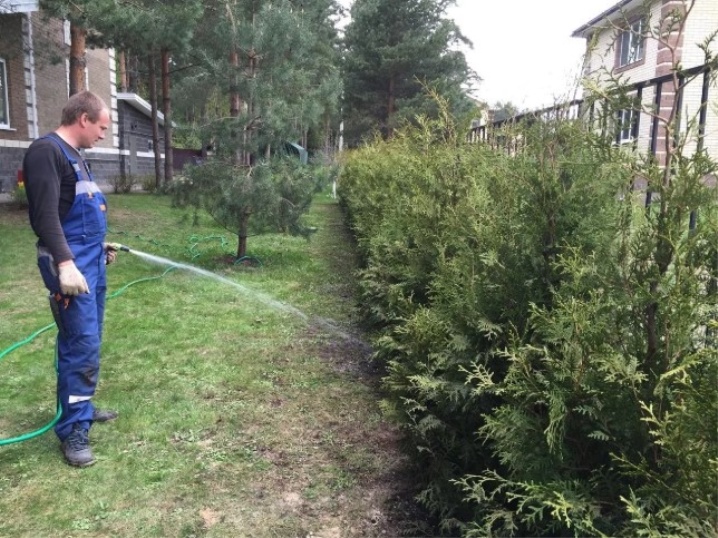
Top dressing
The considered juniper variety grows well and develops even without fertilizers, but in order to increase the plant's immunity and its resistance to pests and diseases, it is still recommended to introduce some useful compounds.
The first feeding should be done in early spring one year after planting. To build up the root system and green mass, it is better to use nitrogen-containing solutions (urea, azofoska). To prepare the composition, you need to take one tablespoon of the product in a bucket of water.
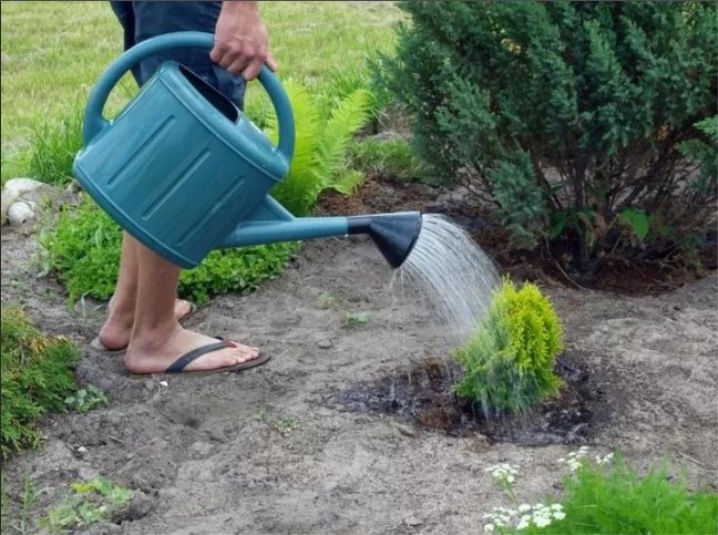
The second time the juniper should be fertilized in the fall. To do this, you need to use complex mineral fertilizing. To prepare such a composition, you need to take 10-15 grams of the substance per 10 liters of water.
At the same time, about 5 liters of solution are consumed per plant.
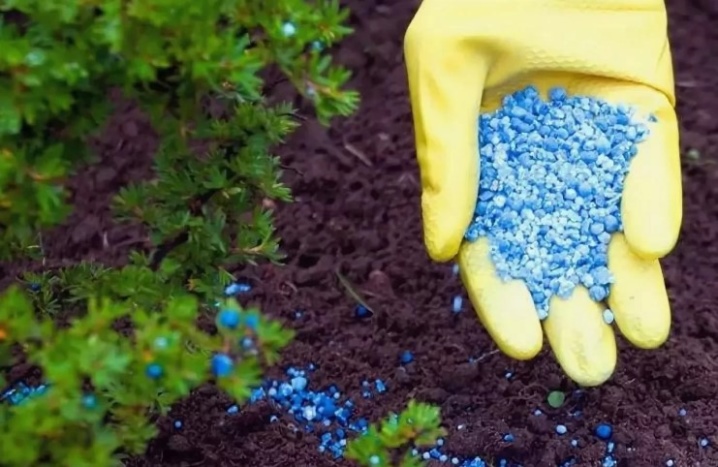
Preparing for winter
The Horstmann juniper variety can easily endure even severe frosts. They do not need to be covered for the winter, but at the same time they must mulch the trunk circle.
Young seedlings are more sensitive to sudden temperature changes, so it is recommended to insulate them. To do this, first, the trunk is hilled with peat or pine sawdust. After that, the aerial part of the coniferous shrub is carefully wrapped in burlap. In the end, all this is covered with roofing material or spruce branches. You need to remove such a shelter in the spring after the snow melts.
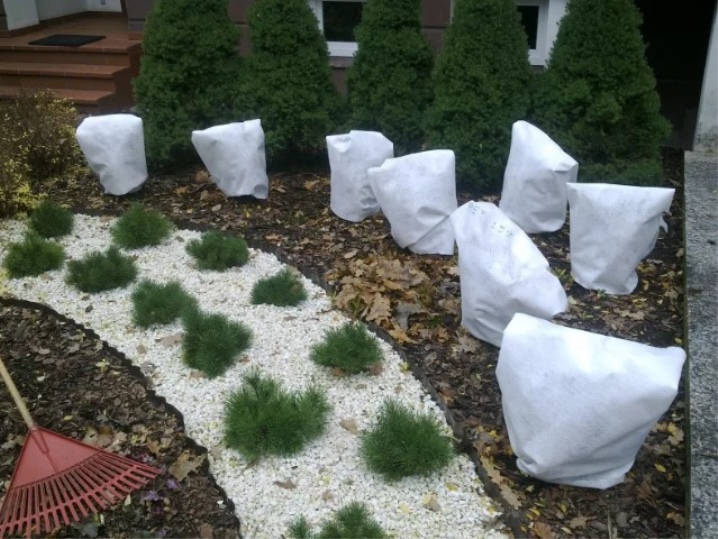
Pruning
The Horstmann juniper does not need formative pruning. But at the same time, every spring it is imperative to remove all damaged branches. For this you can use special scissors or pruning shears... After completing the procedure, it is better to treat the plant by irrigation with a solution of copper sulfate, and then sprinkle everything with charcoal.
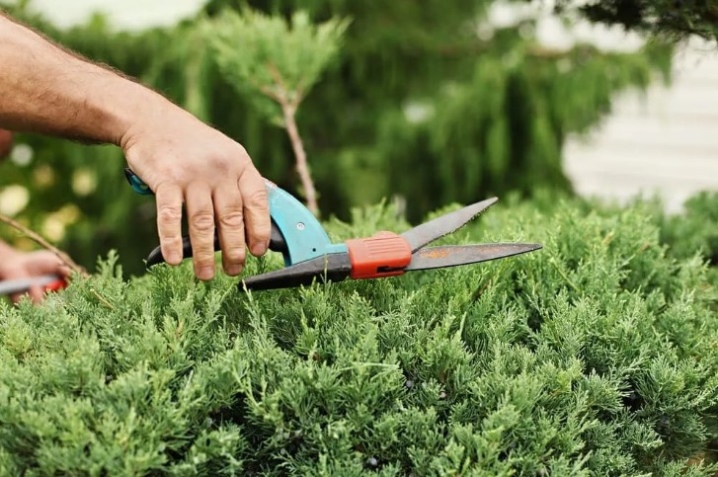
Mulching and loosening
Loosening should be done every other day after each watering. Such a procedure is necessary in order to maintain the air permeability and moisture permeability of the soil. The soil should be loosened to a depth of no more than 3-4 centimeters, since this variety has a superficial type of root system.
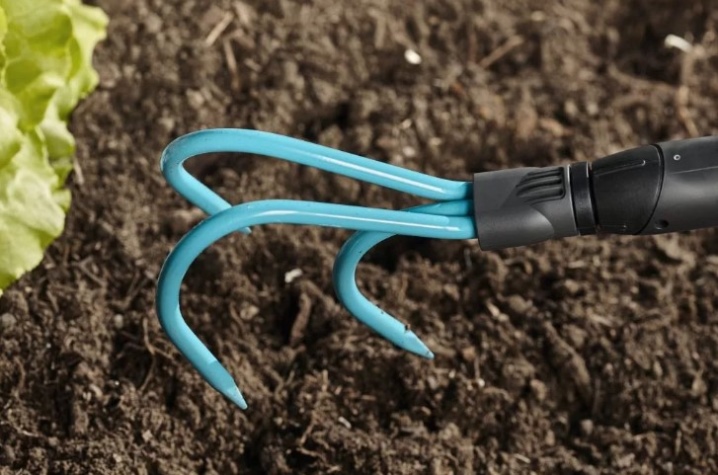
After the loosening procedure, it is recommended to add mulch. This helps to protect the shrubs from drying out. In addition, mulching prevents weeds from forming around the juniper.
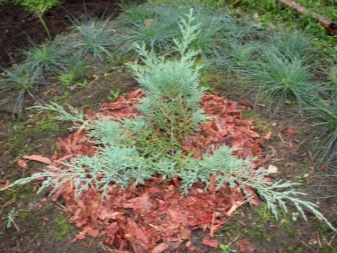
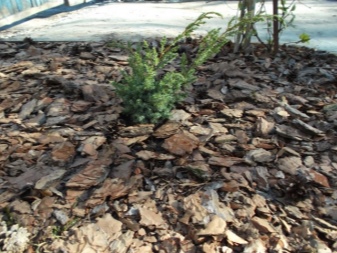
In addition to these basic maintenance procedures, you should also periodically inspect the shrubs and remove any damaged parts in a timely manner. Do not forget about the periodic treatments of conifers with fungicides.
If you want to give the juniper the correct "weeping" shape, then for this you should tie it to a strong base. Then the plant will have vertical - slightly deflected - branches with drooping ends.

Diseases and pests
The Horstmann juniper is a fairly disease-resistant variety. But this is achieved only when some basic rules are followed:
- you can not place such a juniper next to fruit plants;
- you need to wait until the soil is almost completely dry between watering procedures.
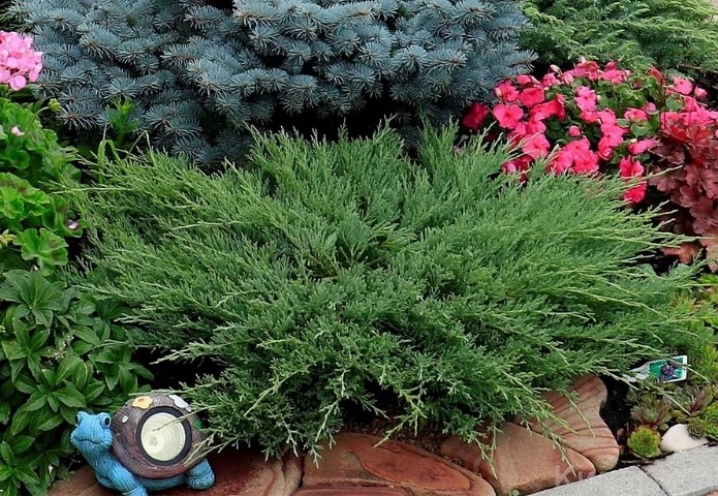
As a preventive measure, such coniferous plantations can be treated in the spring with compositions with a high copper content. Sometimes they are damaged by aphids, sawflies, spider mites and scale insects. At the first sign of damage, parasites should be removed immediately and diseased shrubs should be treated with insecticides.
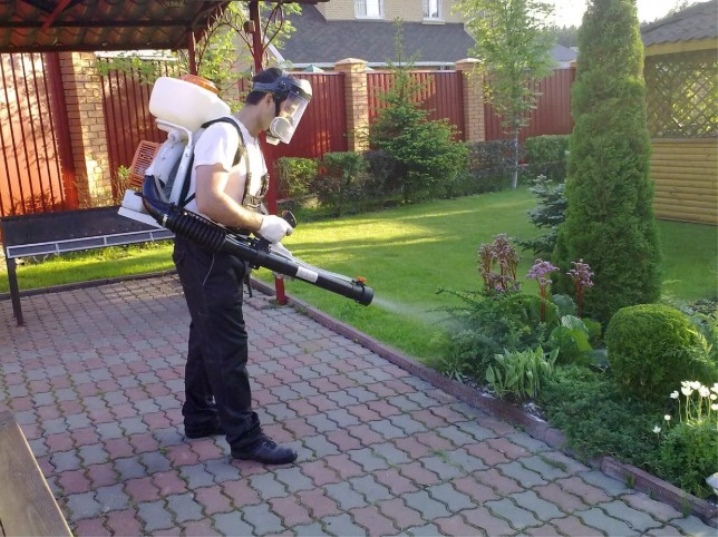
Reproduction
Junipers of all varieties can reproduce in several ways:
- seeds;


- cuttings;
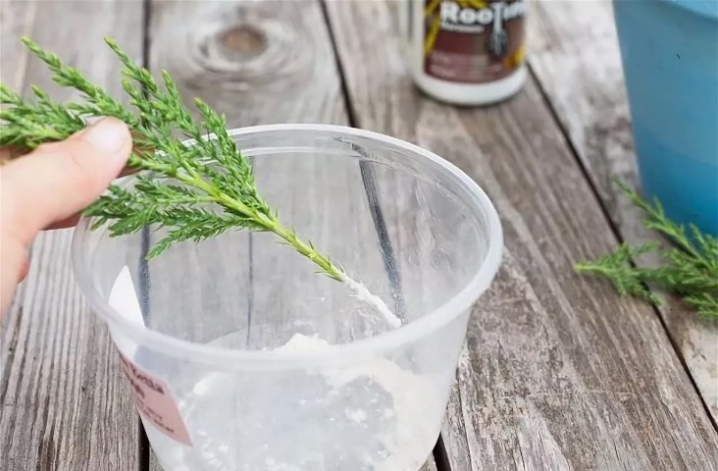
- grafting on the stem of the second shrub;
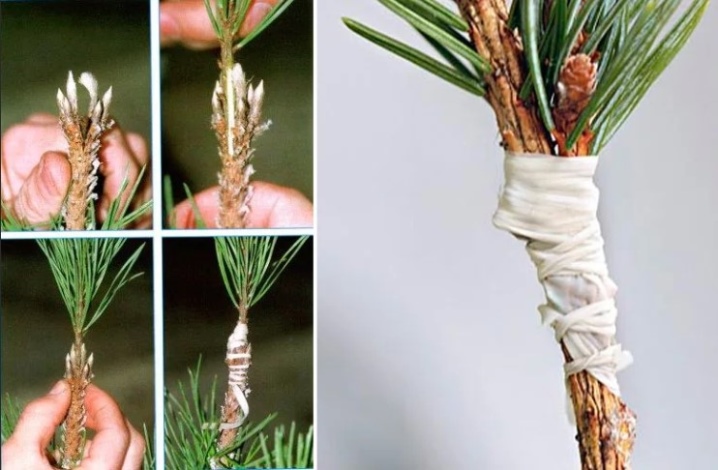
- layering.

The seed method is rarely used, as the result can be the most unpredictable. In addition, it is this method that is considered the most expensive compared to the rest. The most popular, simple and economical option is grafting.
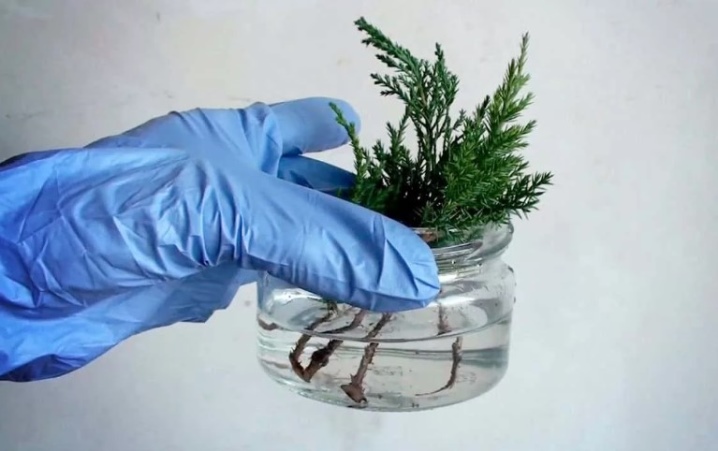
Use in landscape design
Juniper of this variety is often used to decorate garden landscapes. Often, staircases are decorated with such coniferous plantings. In this case, they are planted in large numbers on the sides of the structure. To make the design more interesting, conifers can be diluted with several deciduous shrubs. or bright flower beds.
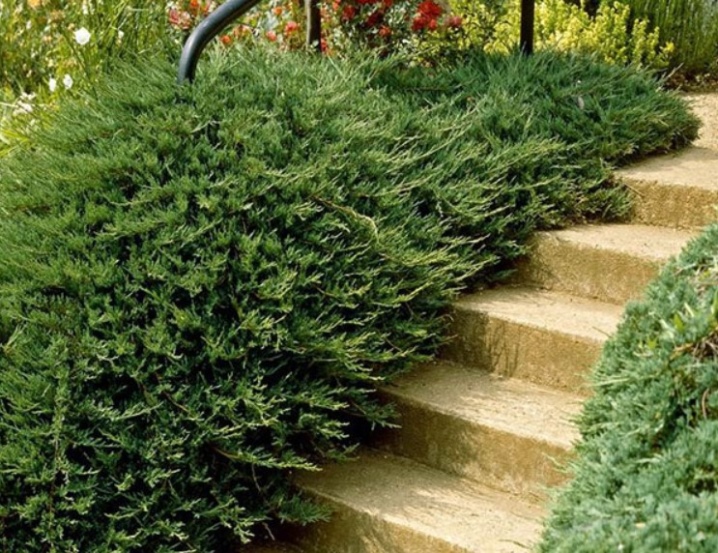
A separate flower bed can be made near the house or near the stairs. It should be decorated with decorative stones. In the middle, plant a taller and slender coniferous tree with a rich and vibrant color. It needs to be surrounded by plantings of miniature junipers. And also here you can place several deciduous plantings with different colors of foliage.
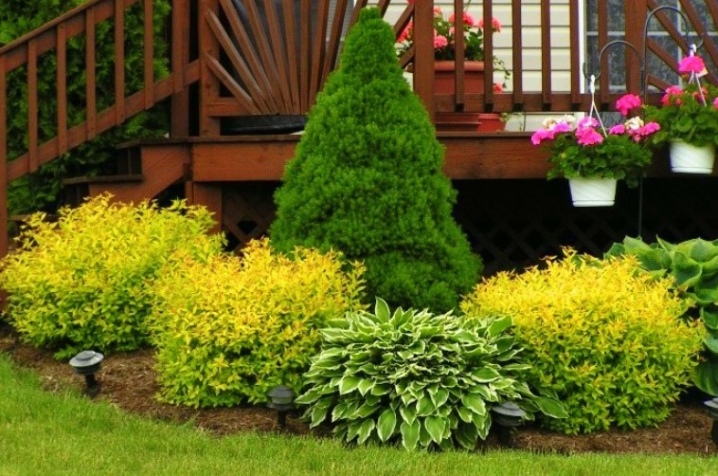
Such coniferous shrubs can be used to decorate stone paths in the garden. Or arrange a hedge. You can plant juniper bushes on both sides of the paths at once. It is permissible to combine such plantings with higher coniferous representatives.
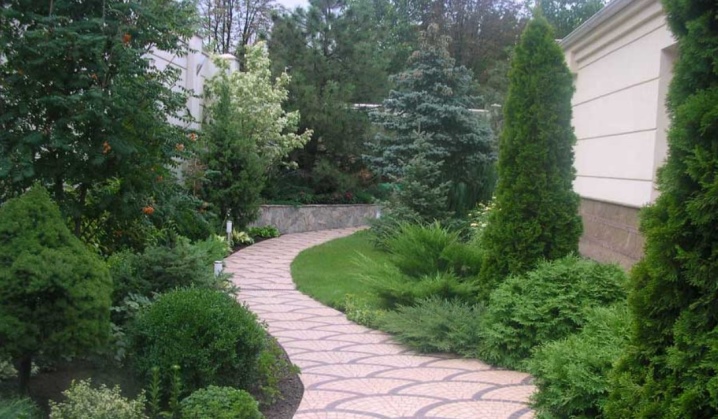
An overview of the Horstmann juniper in the video below.



































































The comment was sent successfully.